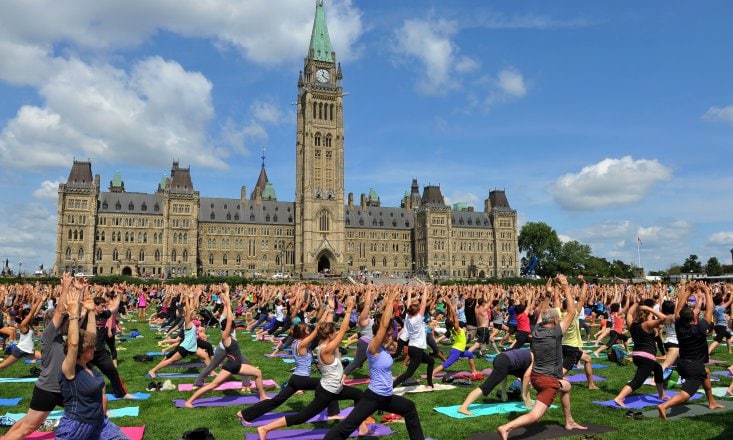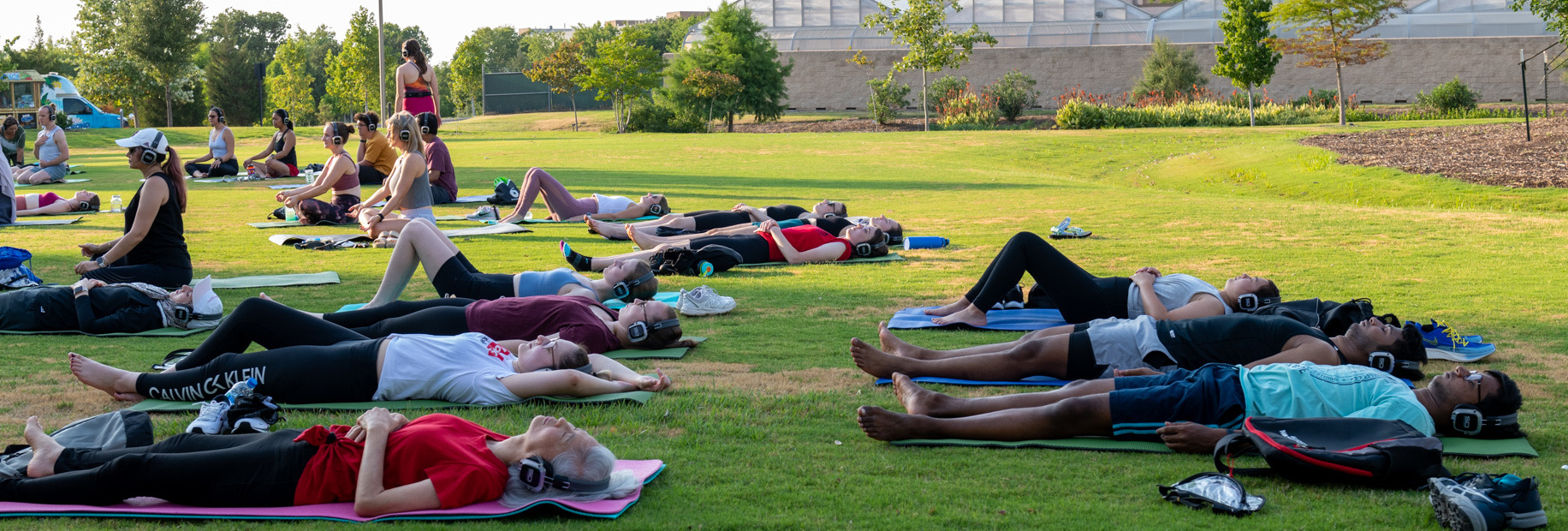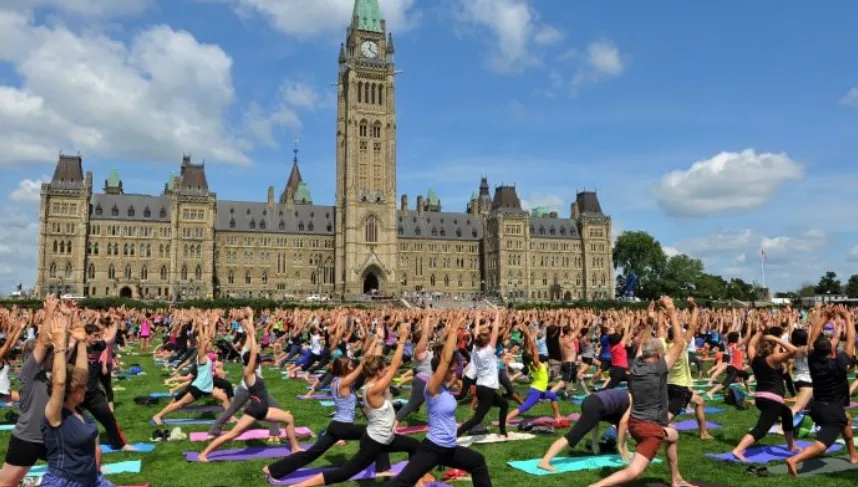Yoga Day: A Global Celebration of Ancient Wisdom and Modern Wellness
Every year on June 21st, millions of people across the globe come together to celebrate International Yoga Day, a testament to the enduring power of this ancient practice that originated in India over 5,000 years ago. This global observance represents more than just a day of physical exercise—it embodies a universal quest for harmony, well-being, and spiritual connection that transcends cultural boundaries.
The Birth of a Global Movement
The story of International Yoga Day begins with a vision shared at the highest levels of international diplomacy. In September 2014, Indian Prime Minister Narendra Modi addressed the United Nations General Assembly, proposing the establishment of an International Day of Yoga. His words resonated with delegates from around the world: “Yoga is an invaluable gift of India’s ancient tradition. It embodies unity of mind and body, thought and action, restraint and fulfillment, harmony between man and nature, and a holistic approach to health and well-being.”
The response was unprecedented. On December 11, 2014, the UN General Assembly adopted resolution 69/131, declaring June 21st as the International Day of Yoga. What made this declaration truly remarkable was the overwhelming support it received—a record-breaking 177 nations co-sponsored the resolution, making it one of the most universally supported initiatives in UN history.
Why June 21st?
The choice of June 21st for International Yoga Day was not arbitrary. This date marks the Summer Solstice – the longest day of the year in the Northern Hemisphere. In many cultures, including ancient Indian traditions, this day holds special significance as it represents the transition from darkness to light, symbolizing the journey from ignorance to knowledge that yoga facilitates. The date also aligns with the traditional yogic understanding of time and cosmic rhythms, making it particularly meaningful for practitioners worldwide.
The 2024 Theme: “Yoga for Self and Society”

The 2024 celebration of International Yoga Day carried the powerful theme “Yoga for Self and Society,” marking the 10th anniversary of this global observance. This theme beautifully encapsulates the dual nature of yoga’s benefits—its capacity to transform individuals while simultaneously contributing to the betterment of society as a whole.
The World Health Organization emphasized this theme’s significance, noting that yoga represents “the harmony of mind and body, the balance between thought and action, and the unity of restraint and fulfillment.
The Multifaceted Benefits of Yoga
Physical Health Benefits
Yoga’s impact on physical health is well-documented and scientifically proven. Regular practice can lead to:
- Improved Flexibility and Strength: Yoga poses (asanas) systematically work on different muscle groups, enhancing both flexibility and muscular strength.
- Enhanced Cardiovascular Health: Studies show that yoga can help reduce blood pressure, improve heart rate variability, and boost overall cardiovascular function.
- Better Respiratory Function: Pranayama (breathing exercises) increases lung capacity and improves respiratory efficiency.
- Pain Management: Yoga has been shown to be effective in managing chronic pain conditions, including arthritis, back pain, and fibromyalgia.
- Improved Balance and Coordination: The practice enhances proprioception and reduces the risk of falls, particularly important for older adults.
Mental and Emotional Well-being
Perhaps even more significant are yoga’s mental health benefits:
- Stress Reduction: Yoga activates the parasympathetic nervous system, promoting relaxation and reducing cortisol levels.
- Enhanced Mental Clarity: Regular practice improves focus, concentration, and cognitive function.
- Emotional Regulation: Yoga helps practitioners develop better emotional awareness and management skills.
- Reduced Anxiety and Depression: Multiple studies have shown yoga’s effectiveness in treating anxiety disorders and depression.
- Improved Sleep Quality: The relaxation techniques in yoga can lead to better sleep patterns and quality.
Spiritual and Social Dimensions
Yoga’s original purpose extends beyond physical and mental health:
- Spiritual Growth: The practice offers a path to self-discovery and spiritual development, regardless of religious affiliation.
- Community Building: Yoga classes and group practices foster social connections and community bonding.
- Cultural Bridge: Yoga serves as a bridge between different cultures, promoting understanding and unity.
- Environmental Awareness: Many yoga traditions emphasize harmony with nature, promoting environmental consciousness.
Global Celebrations and Impact

International Yoga Day has become a truly global phenomenon, with celebrations taking place in iconic locations worldwide:
- Times Square, New York: Thousands gather annually for a mass yoga session in the heart of Manhattan.
- Eiffel Tower, Paris: The iconic landmark provides a stunning backdrop for yoga practitioners.
- Red Square, Moscow: Even in the heart of Russia, yogis come together to celebrate.
- Sydney Opera House: Australia’s most famous landmark hosts spectacular yoga sessions.
- Various UNESCO World Heritage Sites: From the Great Wall of China to Machu Picchu, yoga is practiced in some of the world’s most sacred and beautiful locations.
These celebrations are not merely symbolic; they represent a growing global recognition of yoga’s value in promoting health, peace, and unity. The practice has evolved from its ancient Indian roots to become a universal language of well-being.
Yoga in the Modern World
Scientific Validation
Modern science has increasingly validated what ancient yogis knew intuitively. Research institutions worldwide have conducted thousands of studies on yoga’s effects, finding evidence for its benefits in treating:
- Chronic pain conditions
- Cardiovascular diseases
- Mental health disorders
- Autoimmune conditions
- Metabolic disorders
- Sleep disorders
This scientific backing has led to yoga being integrated into mainstream healthcare systems, with many hospitals and clinics now offering yoga therapy programs.
What is Yoga and why do we celebrate it?
Yoga is an ancient physical, mental and spiritual practice that originated in India. The word ‘yoga’ derives from Sanskrit and means to join or to unite, symbolizing the union of body and consciousness.
Today it is practiced in various forms around the world and continues to grow in popularity.
Recognizing its universal appeal, on 11 December 2014, the United Nations proclaimed 21 June as the International Day of Yoga by resolution 69/131.
The International Day of Yoga aims to raise awareness worldwide of the many benefits of practicing yoga.
The draft resolution establishing the International Day of Yoga was proposed by India and endorsed by a record 175 member states. The proposal was first introduced by Prime Minister Narendra Modi in his address during the opening of the 69th session of the General Assembly, in which he said: “Yoga is an invaluable gift from our ancient tradition. Yoga embodies unity of mind and body, thought and action … a holistic approach [that] is valuable to our health and our well-being. Yoga is not just about exercise; it is a way to discover the sense of oneness with yourself, the world and the nature.”
The resolution notes “the importance of individuals and populations making healthier choices and following lifestyle patterns that foster good health.” In this regard, the World Health Organization has also urged its member states to help their citizens reduce physical inactivity, which is among the top ten leading causes of death worldwide, and a key risk factor for non-communicable diseases, such as cardiovascular diseases, cancer and diabetes.
But yoga is more than a physical activity. In the words of one of its most famous practitioners, the late B. K. S. Iyengar, “Yoga cultivates the ways of maintaining a balanced attitude in day-to-day life and endows skill in the performance of one’s actions.”
Accessibility and Inclusivity
One of yoga’s greatest strengths is its adaptability. The practice can be modified for people of all ages, abilities, and fitness levels:
- Chair Yoga: For those with mobility limitations
- Prenatal Yoga: Specially designed for expectant mothers
- Children’s Yoga: Age-appropriate practices for young learners
- Senior Yoga: Gentle modifications for older adults
- Therapeutic Yoga: Targeted practices for specific health conditions
The Future of International Yoga Day
As we look toward the future, International Yoga Day continues to evolve and expand its reach. The themes for each year reflect contemporary challenges and opportunities:
- Technology Integration: Virtual reality yoga sessions and AI-powered personalized practices
- Environmental Focus: Eco-friendly yoga practices and sustainability awareness
- Global Health: Yoga as a tool for public health and pandemic recovery
- Social Justice: Using yoga principles to promote equality and social harmony

How to Participate in International Yoga Day
Whether you’re a seasoned practitioner or a complete beginner, there are numerous ways to participate in International Yoga Day:
For Beginners:
- Join local community yoga sessions
- Try online yoga classes
- Visit yoga studios offering free or discounted classes
- Participate in workplace yoga programs
For Experienced Practitioners:
- Organize community yoga events
- Teach free classes to underserved communities
- Share your practice on social media to inspire others
- Volunteer at yoga festivals and events
For Organizations:
- Host workplace yoga sessions
- Sponsor community yoga events
- Partner with local yoga studios
- Promote employee wellness through yoga programs
Significance of Yoga
Yoga is much more than a physical activity. It involves self-awareness, meditation, breath work and chanting. Performing yoga asanas is beneficial to your overall well-being.
- Raises Awareness: The most prominent aspect is raising global awareness about yoga. International Yoga Day puts a spotlight on this ancient practice, encouraging people to explore its potential for improving their lives.
- Celebrates Benefits: The day celebrates the numerous benefits of yoga for both physical and mental well-being. This includes promoting yoga for stress management, flexibility, strength, and overall health.
- Unites the World: International Yoga Day fosters a sense of global unity and cultural exchange. People from all backgrounds and nationalities come together to celebrate yoga, creating a sense of community around this shared practice.
The Lasting Impact
International Yoga Day represents more than a single day of celebration; it embodies a growing global consciousness about the importance of holistic well-being. The practice of yoga offers practical tools for managing the stresses of modern life while connecting us to ancient wisdom and to each other.
As we continue to face global challenges—from climate change to social inequality, from mental health crises to technological disruption—yoga provides a framework for finding balance, building resilience, and fostering compassion. The principles of yoga—non-violence (ahimsa), truthfulness (satya), and unity (yoga literally means “to “unite”)—offer guidance for creating a more peaceful and harmonious world.
Conclusion
International Yoga Day stands as a powerful reminder of humanity’s shared desire for health, peace, and spiritual growth. What began as an ancient Indian practice has evolved into a global movement that transcends cultural, religious, and geographical boundaries. Each year on June 21st, as millions of people around the world roll out their yoga mats and breathe together, they participate in something far greater than individual practice—they become part of a global community united in the pursuit of well-being and harmony.
The journey of yoga from the banks of the Ganges to the floors of modern studios worldwide illustrates the timeless appeal of practices that honor both individual growth and collective well-being. As we celebrate International Yoga Day, we honor not just a physical practice, but a philosophy of life that has the power to transform individuals and, through them, the world.





